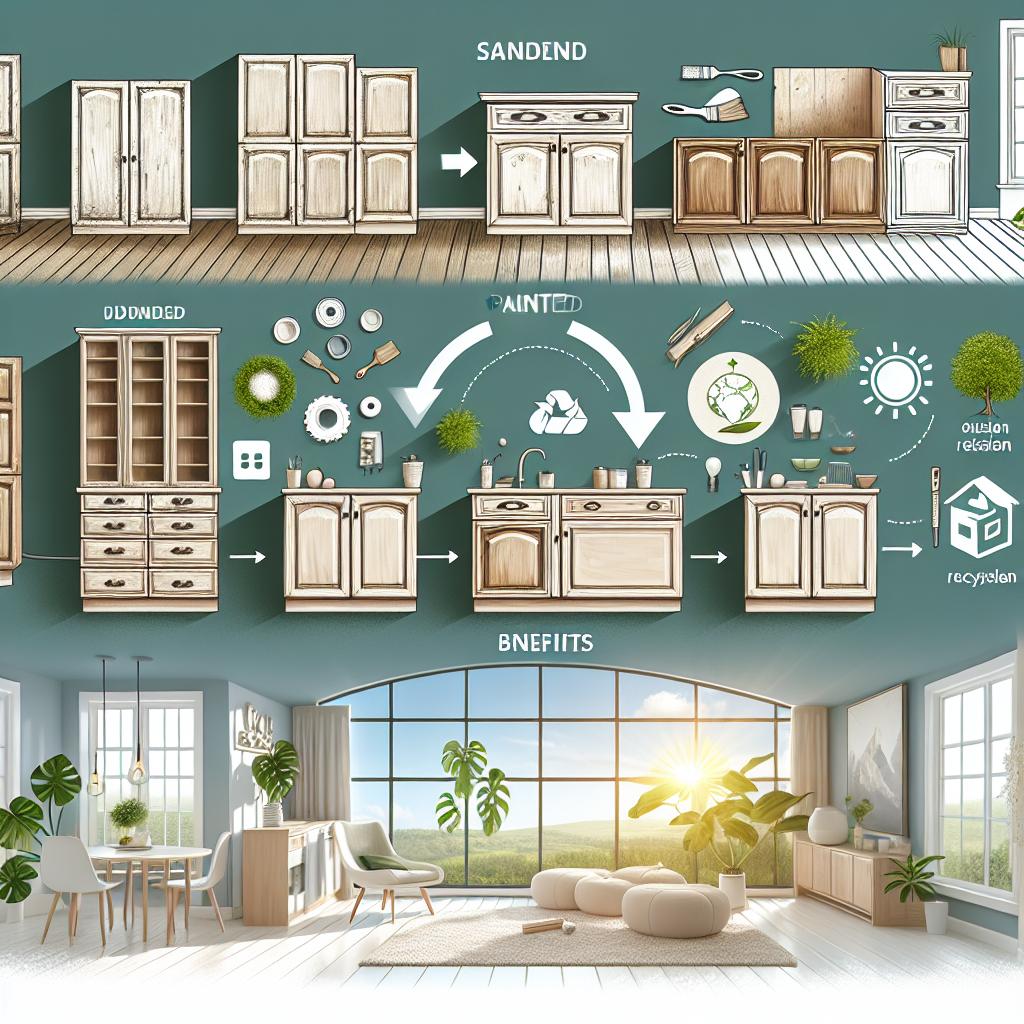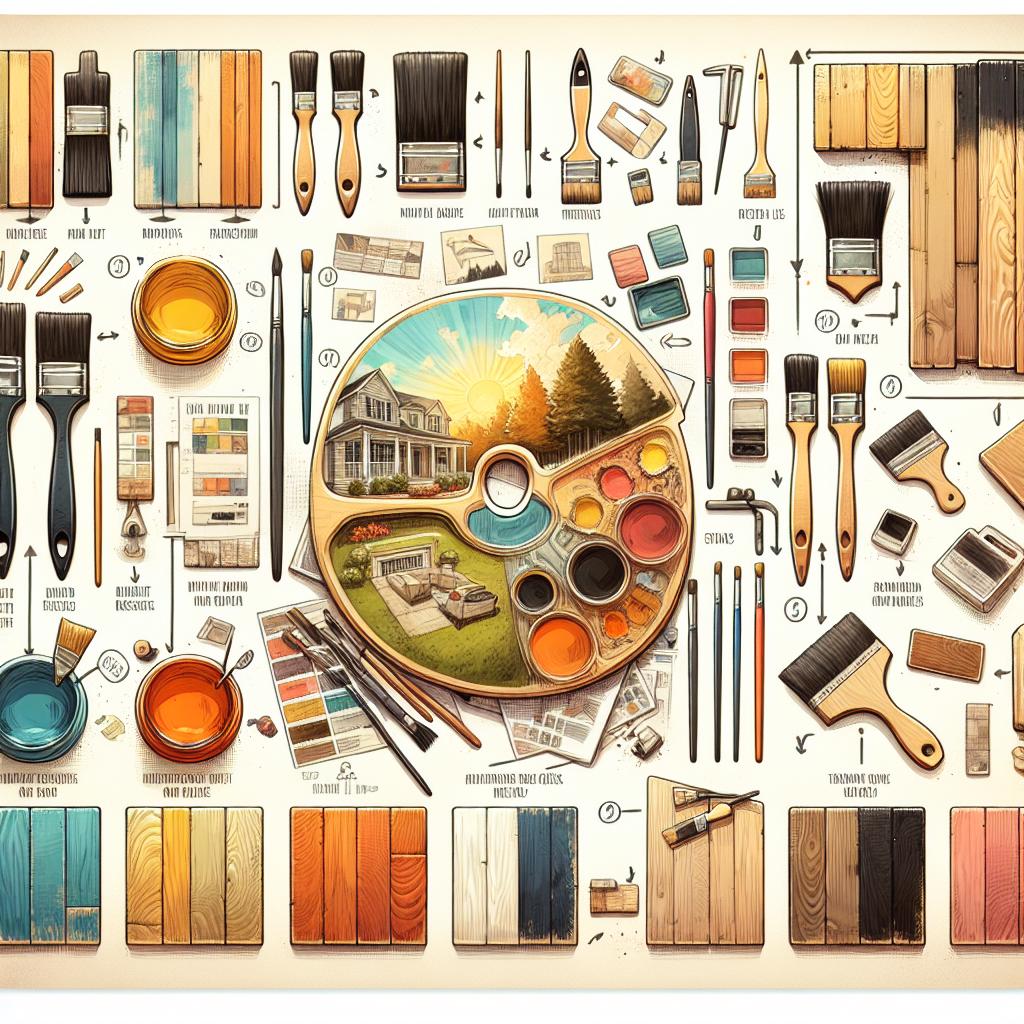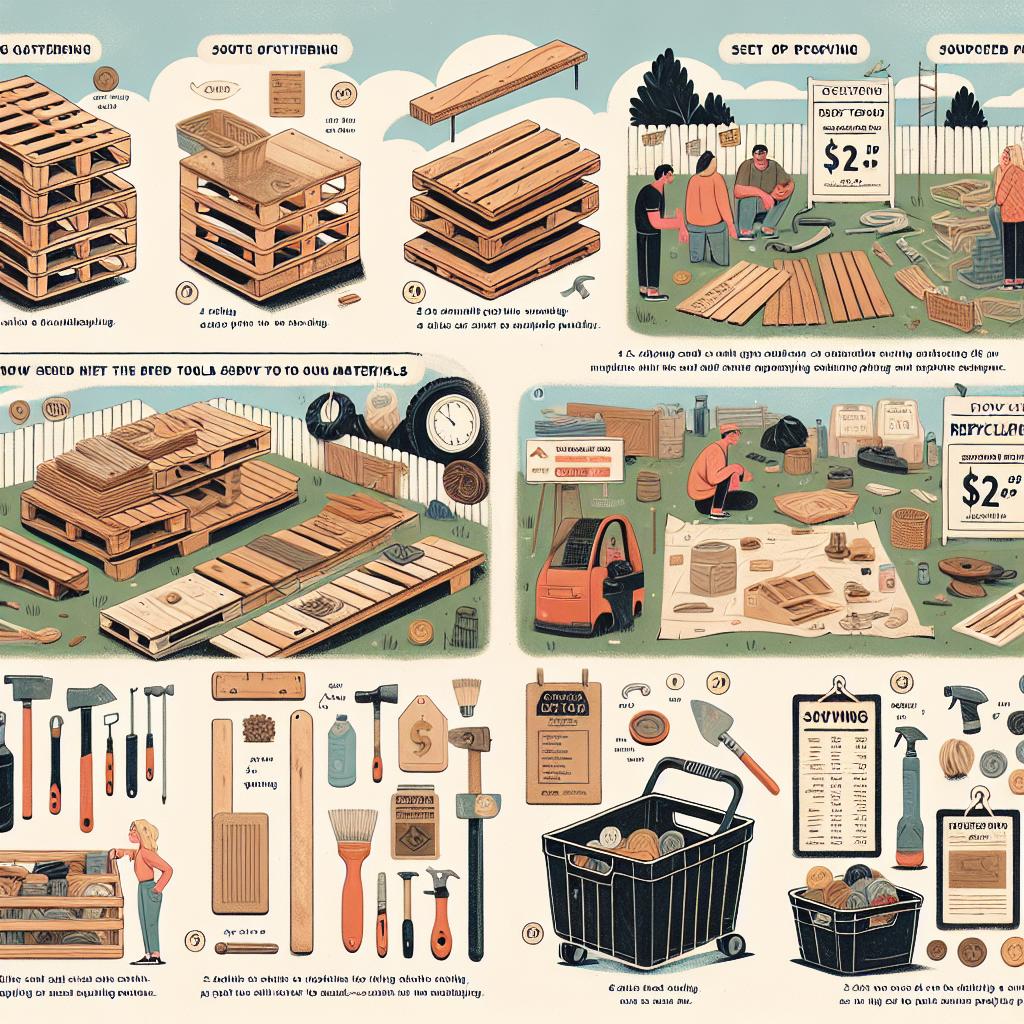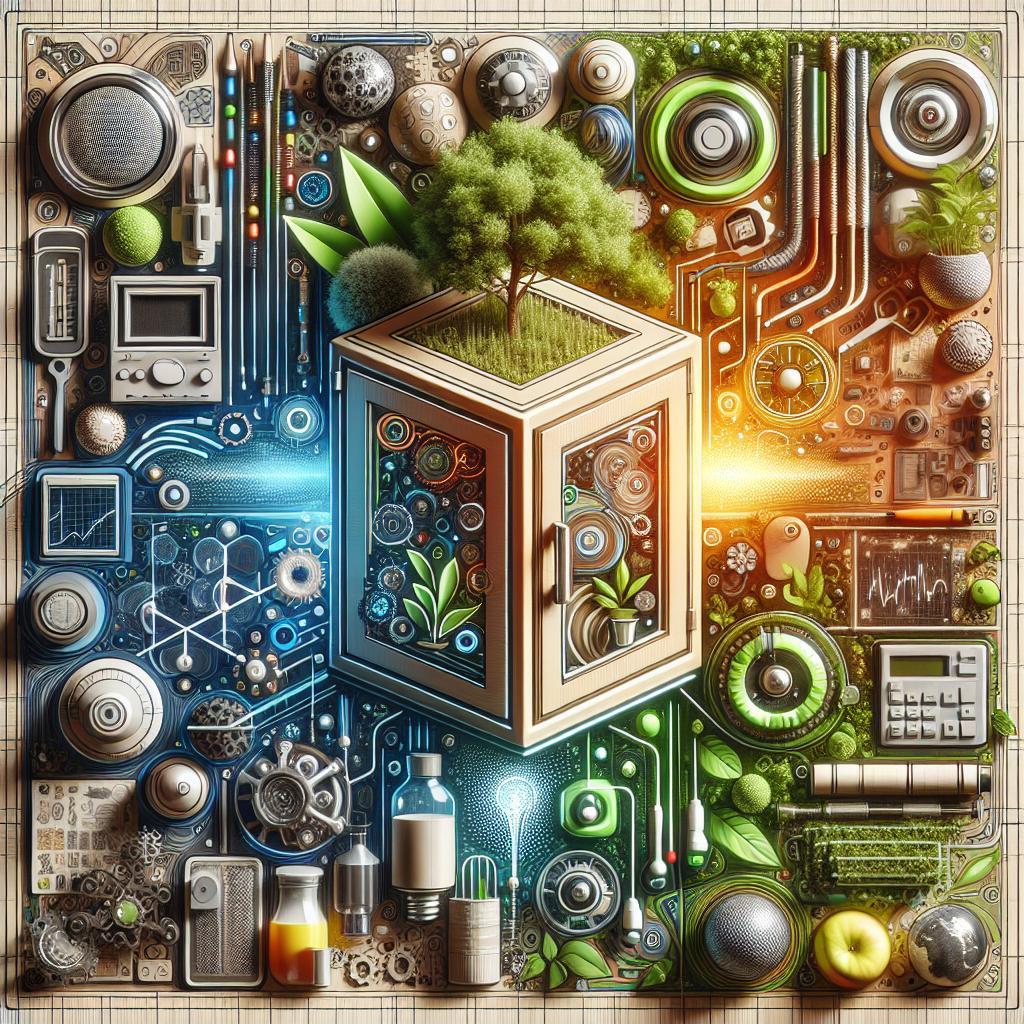In a world increasingly aware of its environmental footprint, the art of upcycling has emerged as a beacon of creativity and sustainability. Among the many furniture pieces that beckon for a second chance, cabinets stand out as versatile treasures waiting to be transformed. Whether draped in a fresh coat of paint, reimagined with innovative hardware, or restructured to serve entirely new purposes, upcycled cabinets hold the promise of not only reducing waste but also breathing new life into our living spaces. This article explores the myriad possibilities of upcycling cabinets—offering inspiration, tips, and techniques to help you embark on your own creative journey. Join us as we delve into the world of imaginative restoration, where hidden potential awaits in every forgotten piece of furniture.
Exploring the Benefits of Upcycling Cabinets in Sustainable Interiors
Upcycling cabinets is an innovative way to breathe new life into unused or outdated furniture, transforming not just the look of your space but the sustainability of your home. By choosing to upcycle, you’re engaging in a process that significantly reduces waste, as you divert materials from landfills and minimize the need for new resources. The environmental benefits are clear: breaking the cycle of consuming new items leads to less energy expenditure, diminished pollution, and a lower carbon footprint. Moreover, each upcycled cabinet brings unique character to your interiors, often infused with a story of its previous life, ultimately contributing to a more personalized and thoughtful aesthetic.
Incorporating upcycled cabinets into your interior design not only supports eco-friendly practices but also provides practical advantages. Consider the following benefits:
- Cost-Effective: Upcycling typically costs less than purchasing new furniture.
- Customizable: You can tailor the design, color, and finish to perfectly suit your interior style.
- Durability: Older cabinets are often made from solid wood, offering superior longevity compared to modern counterparts.
Furthermore, the process of upcycling can spark creativity and skills development, allowing homeowners to engage with their spaces on a deeper level. To aid your upcycling journey, consider a simple comparison of materials in the table below:
| Material | Pros | Cons |
|---|---|---|
| Wood | Durable, Repairable, Classic look | Heavy, Requires maintenance |
| Metal | Modern appeal, Long-lasting | Can rust, May be cold to touch |
| Composite | Lightweight, Affordable | Less durable, Can be difficult to repair |
Design Inspirations: Transforming Old Cabinets into Stunning Statements
Revamping old cabinets is a delightful journey that allows you to infuse your personal style into your home. Imagine transforming a worn-out cabinet into a striking focal point by employing a burst of color or a unique texture. Bold hues like deep navy or vibrant teal can breathe new life into your furniture, while techniques like distressing or whitewashing can enhance the charm of rustic designs. Additionally, consider the use of stencils or decals to add intricate patterns or artistic flair, creating a stunning visual impact that draws attention. Don’t forget the power of hardware; swapping out outdated knobs and handles for antique brass or modern geometric shapes can dramatically alter the cabinet’s overall aesthetic.
For those seeking a more sophisticated touch, integrating mixed materials such as glass and metal can elevate the design further. A wooden cabinet can be paired with open shelving made of reclaimed wood to contrast beautifully with its sturdiness. Alternatively, transforming your cabinet into a media center or a mini-bar with clever storage solutions can give it an entirely new function, blending style and practicality seamlessly. Here are a few ideas to inspire your upcycling adventure:
- Decoupage with colorful fabrics
- Adding LED strip lights
- Incorporating mirrors for reflection
- Transforming with mosaic tiles
| Old Cabinet Style | Upcycling Idea |
|---|---|
| Shabby Chic | Distress and paint in pastel colors |
| Retro | Incorporate bold patterns and metallic accents |
| Classic Oak | Sand down and refinish with a dark stain |
| Vintage Metal | Resurface with chalk paint and add new hardware |

Techniques for a Flawless Finish: Painting, Staining, and DIY Hacks
Achieving a flawless finish when upcycling cabinets requires careful preparation and the right techniques. Start by ensuring your surfaces are clean and free from grease or old paint. Sanding is crucial to provide a smooth base; opt for a medium-grit sandpaper followed by a fine-grit for the finishing touch. Once sanded, wipe down with a damp cloth to remove dust. Use a high-quality primer to seal the surface before painting or staining. This will not only enhance adhesion but also help in achieving a true color, especially when working with darker hues over light surfaces.
When applying paint or stain, choose tools that suit your material. For paint, a high-density foam roller can create an even finish, while a brush is perfect for edges and detailed work. If you’re staining, use a rag to work in the product and wipe away excess for a more controlled application. Don’t forget to follow up with a protective clear coat to ensure durability. Consider these DIY hacks to elevate your project: applying paint in thin layers for better control, using painter’s tape for clean lines, and experimenting with textured finishes for an eye-catching effect.

Budget-Friendly Tips for Sourcing Materials and Tools for Upcycling Projects
When it comes to transforming old cabinets, locating affordable materials and tools is key to keeping your project on budget. Start with your home; check your garage, attic, or even your basement for leftover supplies from previous renovations. Items like paint, hardware, or wood scraps can often be repurposed and given new life. For tools, consider borrowing from friends or neighbors instead of purchasing new ones. Local community tool libraries or maker spaces can also be great options, as they offer access to tools at little or no cost.
In addition to utilizing what you already have, explore local second-hand stores, thrift shops, and online marketplaces for budget-friendly finds. You can often discover vintage knobs, handles, or even cabinets themselves that just need a little TLC. Don’t overlook local classified ads and social media groups that promote recycling and upcycling initiatives; these can be treasure troves of pre-loved materials waiting for a new project. When you pair creativity with these savvy sourcing strategies, you’ll find that crafting beautiful and functional upcycled cabinets doesn’t have to break the bank.
| Source | What to Look For |
|---|---|
| Thrift Stores | Cabinet Hardware, Old Paint, Decorative Elements |
| Garage Sales | Furniture, Tools, Supplies |
| Online Marketplaces | Used Cabinets, DIY Supplies, Inspiration |
| Community Tool Libraries | Specialized Tools, Machines, Equipment |
Q&A
Q&A on Upcycling Cabinets
Q1: What does “upcycling” mean in the context of cabinets?
A: Upcycling refers to the creative process of transforming old or unused cabinets into something new and functional, enhancing their value and aesthetics while minimizing waste. It involves refurbishing, repurposing, or creatively modifying cabinets to give them a second life.
Q2: Why should I consider upcycling my cabinets instead of buying new ones?
A: Upcycling your cabinets can save you money, reduce your environmental footprint, and provide a unique aesthetic to your space. Each upcycled piece carries a story and character that new, mass-produced cabinets often lack. Plus, the upcycling process allows for customization to perfectly fit your style and needs.
Q3: What materials do I need to successfully upcycle a cabinet?
A: The materials can vary based on your project. However, basic necessities typically include sandpaper or a sander, paint or wood stain, brushes or rollers, cabinetry hardware, and possibly new shelving or liners. Additional materials might include fabric, wallpaper, or decorative elements for a more unique finish.
Q4: Can any cabinet be upcycled, or are there specific types better suited for this process?
A: While most cabinets can be upcycled, those made from solid wood or quality manufactured materials tend to yield the best results due to their durability and structure. Vintage or antique cabinets can often be particularly rewarding to upcycle, as they carry history and craftsmanship that can be highlighted during the process.
Q5: What are some popular upcycling ideas for cabinets?
A: There are countless creative ideas to breathe new life into cabinets! You could transform a tired kitchen cabinet into a charming bookshelf, use old cabinet doors to create a unique coffee table, or refinish a bathroom vanity with bold colors and stylish hardware. Adding decorative paint, changing out the knobs, or repurposing compartments can also elevate the look.
Q6: How can I ensure that my upcycled cabinet is durable and functional?
A: Start with a thorough inspection of the cabinet for structural integrity. Sanding and priming surfaces before painting can enhance durability. Choose high-quality paint and sealers for longevity, and if you‘re making functional adjustments (like adding shelves), use sturdy materials to support the new design. Maintenance is key; keep an eye on any wear over time.
Q7: Are there any skills required to upcycle cabinets, and can beginners try it?
A: Basic DIY skills, like painting and sanding, are helpful, but most upcycling projects are beginner-friendly. Many tutorials are available online to guide you through various techniques. Start with a simple project to build confidence, and remember that creative expression can often lead to beautiful, unique results, regardless of skill level!
Q8: Where can I source materials for my upcycling project?
A: You can find cabinets to upcycle at thrift stores, flea markets, garage sales, or even from friends and family. For additional materials, local home improvement stores, reclamation yards, or online marketplaces like Craigslist or Facebook Marketplace can be excellent resources. Don’t forget to explore your own garage or attic — you might find hidden gems!
Q9: How can I share my upcycling journey with others?
A: Social media platforms like Instagram, Pinterest, and TikTok are fantastic places to showcase your projects. Consider writing a blog or recording a video series to document your upcycling journey, sharing tips, before-and-after transformations, and inspiring others to join the upcycling movement.
Q10: What is the broader impact of upcycling furniture like cabinets?
A: Upcycling cabinets contributes positively to a circular economy by reducing waste and encouraging sustainability. It fosters creativity and individuality in home décor while supporting local communities by reinvigorating unused resources. By breathing new life into old furniture, we take part in a movement that values ingenuity over disposability, making a meaningful impact on our environment.
Wrapping Up
As we draw the curtains on our exploration of upcycling cabinets, it’s clear that these humble pieces of furniture hold vast potential for transformation. With a dash of creativity, a bit of sweat equity, and perhaps some innovative materials, your ordinary cabinet can become a stunning centerpiece in any room. Whether you choose to breathe new life into an old find or craft something entirely unique, upcycling enables you to tell your own story while reducing waste and promoting sustainability.
So, as you venture into your next DIY project, remember that every cabinet you encounter is an opportunity waiting to be discovered. Embrace the charm of imperfection, and let your imagination guide you. In doing so, not only will you beautify your space, but you’ll also contribute to a more sustainable future—one upcycled cabinet at a time. Happy crafting!

